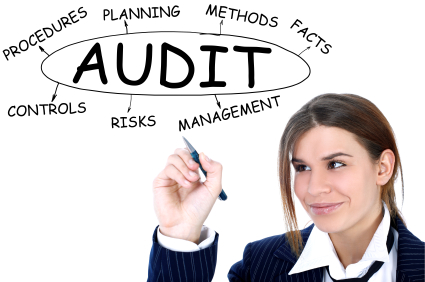8 Common Tax Mistakes
Self Employment Business Expenses That Are Not Fully Deductible
By L.Kenway BComm CPB Retired
This is the year you get all your ducks in a row! Start by starting.
Edited May 13, 2024 | Updated January 17, 2024 | Originally published on Bookkeeping-Essentials.com in 2010
1. Prepaid Expenses | 2. Capital Expenditures | 3. Lease Payments | 4. Meals and Entertainment | 5. Certain Legal Fees | 6. Home Telephone | 7. Inventory | 8. Periodical Ads
Self employed business owners in Canada often make common tax mistakes by claiming items that are not fully deductible in the current tax year, putting them at risk during an audit. Your bookkeeper or accountant should be identifying and analyzing these tax sensitive items.

8 Common Tax Mistakes Made By the Self-employed
What business expenses have limitations and are not fully deductible in the year incurred?
Fair warning, this article is a bit technical from a bookkeeping point of view. You might just want to skim over the 8 common tax mistakes. Make a note to ask your accountant to ensure you have booked these items correctly.
Here's a peek at eight ...
1. Prepaid Expenses
Prepaid expenses must be handled using the accrual method. This means only the portion of the expense that is applicable to the current year can be deducted on your income tax return. The remaining portion sits on your balance sheet waiting to be deducted next year.
AUDIT READY
Put prepaids on your year-end audit ready checklist. Insurance and rent are the most common prepaid expenses.
Insurance is exempt from GST HST so there should be no GST HST booked for insurance.
In publication IT417R2 Prepaid Expenses and Deferred Charges, CRA talks about treating prepaids, in most cases, in the same manner as Accounting Standards for Private Enterprises (ASPE).
What are prepaid expenses?
Prepaid expenses are amounts you pay in advance of receiving the service. The two most common amounts that are prepaid are insurance and rent.
At year-end, your financial statements are adjusted by your bookkeeper to ensure only the portion you have "used up" is expensed to your income statement. The remainder is a current asset which sits in an account on your balance sheet until the next year ... when it will be booked to the appropriate expense account.
If you want to book it yourself. Here's how ...
As an example, this is how to record your prepaid insurance when you pay the bill:
- Debit (Increase) Prepaid Expenses (a current asset on your balance sheet)
- Credit (Decrease) Cash in Bank (a current asset on your balance sheet) OR Accounts Payable (a current liability on your balance sheet)
Each month end, you would book this entry to expense a portion (1/12th) of the insurance. If you only have to provide your bank with financials annually, making this adjustment annually rather than monthly or quarterly is fine for most small businesses.
- Debit (Increase) Insurance Expense (on your income statement)
- Credit (Decrease) Prepaid Expenses (a current asset on your balance sheet)
Don't sweat it if the insurance was initially booked to the expense account on the income statement instead of the prepaid account on the balance sheet. It just means that at year-end, your bookkeeper will adjust your insurance expenses to reflect only the months covered to date. The months still outstanding will be reclassified to the prepaid account.
2. Capital Expenditures
Capital expenditures cannot be claimed as a current expense. Capital assets must be reported on your Capital Cost Allowance Schedule 8 to be expensed over a number of years.
AUDIT READY
If you don't know how to record the bookkeeping entry to capitalize items, book them to an expense account called "Ask My Accountant". This ensures they will be dealt with properly by accountant at yearend.
Not sure if your expense is a capital expense? I've provided you with information below, to help you make better decisions when deciding where to record something in your books. It is quite technical so feel free to skip it and move on to common mistake number 3.
Should it be Depreciated or Amortized? Hmmm
Capital assets have to capitalized, not expensed, because they have a useful life of more than one year ...
... and in accordance with the matching principle, we report "the using up" of the asset as an expense on the income statement over the useful life of the asset.
In your chart of accounts, there is a contra account in the capital asset section called Accumulated Amortization (or Accumulated Depreciation).
Accumulated amortizaton accounts are always contra accounts.
This account tracks the cumulative amount of amortization that has been expensed over the years ...
... so you can always tell at a glance what the original cost was and how much of the asset has been expensed to date.
This is useful information, as it gives you a gauge as to when the asset may need to be replaced ... good to know when preparing your budget and financial plans.
Be aware that if you are depreciating your assets based on the CCA rate instead of the useful life of the asset, your net book value will not be a gauge for alerting you to when an asset may need to be replaced.
The name of the account that captures the expense side of the transaction on the income statement is called Amortization Expense (or Depreciation Expense).
But why is amortization expense also referred to as depreciation? If you have a burning desire to know, click here to find the answer.
Book Depreciation vs. Tax Depreciation
You also might have heard the terms book depreciation (depreciation for book purposes) and tax depreciation (depreciation for tax purposes). What is the difference between the two?
Depreciation for book purposes refers to recording of depreciation in your general ledger that is based on accounting principles.
Depreciation for tax purposes is based on income tax regulations in your country. In Canada it would be capital cost allowance or CCA.
3. Lease payments
Lease payments under a conditional sales contract should be capitalized and are not fully deductible in the first year.
AUDIT READY
Be kind to yourself and just ask your accountant to make sure any lease contracts you have entered into are booked properly.
4. Meals and Entertainment

Meal and entertainment expenses are frequently audited. A common tax mistake is to claim 100% of the expenses.
Generally, meals and entertainment are limited to 50% of the amount paid. You need supporting documentation including receipts to show the restaurant meal or entertainment expense was for business purposes.
Insufficient proof related to your meal and entertainment costs may result in them being denied.
AUDIT READY
Meal and entertainment expenses fall into three categories. Which category depends upon the purpose of the meal or event. They must also be reasonable not lavish and for the purpose of earning business income.
- 100% deductible
- 50% deductible
- Never deductible
Learn more about the meal and entertainment deductibility rules.
Get Into This Compliance Habit When Dining
ALWAYS write on back of the receipt (or make an electronic note in your calendar) the name of the business associate and the reason for the meeting when entertaining or meeting. Don't forget, for the expense to be partially deductible, it must have a genuine business purpose.
At one point, CRA was asking for the phone number of the business associate(s). I don't know if they are still doing that but you may want to jot that down as well. It will make an audit go more smoothly. See paragraph 19 of IT-518R if you want more information.
AUDIT READY
Did you know that your credit card statement alone is not good enough for receipt purposes? What if you don't have the meal receipt that shows up on business credit card statement ... What if you lost it?
Then use the guidelines discussed here to record the expense. Remember this will only be accepted by an auditor if it is infrequently used because there is no way you can prove to an auditor that you lost every single meal receipt!
5. Legal Fees incurred to buy a capital property
A common tax mistake is to claim all of your legal fees incurred to buy a capital property in the current tax year. These legal fees must be capitalized then expensed over a number of years.
AUDIT READY
If you don't know how to record the bookkeeping entry to capitalize items, book them to an expense account called "Ask My Accountant". This ensures they will be dealt with properly by accountant at yearend.
6. Use of your home telephone for business
 Personal home landline rental is not deductible.
Personal home landline rental is not deductible.Now a days, this isn't as common as it used to be. However, if you use your personal home telephone landline for business too, the monthly rental is not a small business tax deduction.
AUDIT READY
CRA have a process for expenses with a personal and business component to them. The long distance billings pertaining to the business can be a tax deduction on line 9220. Business add-ons are also tax deductible. Learn more about the deductibility of your landline.
Cell phones are have a different tax treatment.
7. Inventory That Has Not been Sold
A common tax mistake small business owners make is to expense all their inventory costs.
- Inventory that has not been sold is not a deductible tax expense. It is reported on your balance sheet as an asset.
- Only inventory sold or consumed is tax deductible in the current tax year.
AUDIT READY
A perpetual inventory system should take care of itself if you are keeping your books using accrual accounting.
Most small businesses use the periodic inventory system which require occasional inventory counts. This must be done at yearend as an adjustment to inventory is required in your books.
Learn more about inventory counts and inventory delivery charges.
ASPE Inventory Reporting On Your Financial Statements
The Accounting Standards for Private Enterprise (ASPE) that came into effect on January 1, 2011 did not affect how you report inventory on your financial statements.
CPA Canada Handbook – Accounting, section 3031, paragraph 35 requires the financial statements to disclose:
- the accounting policies adopted in measuring inventories, including the cost formula used -- it is generally measured initially at cost followed at the lower of cost and net realizable value on a FIFO basis;
- the total carrying amount of inventories and the carrying amount in classifications appropriate to the entity -- disclose as a separate line on the Balance Sheet with notes detailing significant categories (raw materials, WIP, finished goods) if applicable; and
- the amount of inventories recognized as an expense during the period -- usually reported as Cost of Sales on the Income Statement.
8. Advertising in periodicals
Advertising in periodicals directed to a Canadian market with less than 80% Canadian editorial content is limited to a 50% deduction.
AUDIT READY
Plan your advertising expenses around allowable advertising expenditures that are 100% tax deductible.












